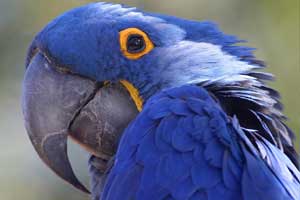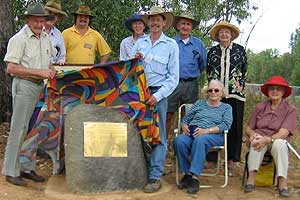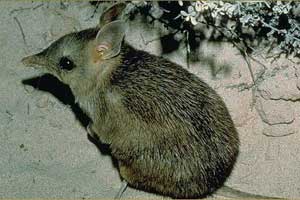


iron range national park  This magnificent park contains Australia’s nearest equivalent to the wild, dense tropical jungles of New Guinea. Steaming hot vegetation thrives here with exotic wildlife like the nocturnal green python and vivid blue eclectus parrot, that are found nowhere else in Australia. This magnificent park contains Australia’s nearest equivalent to the wild, dense tropical jungles of New Guinea. Steaming hot vegetation thrives here with exotic wildlife like the nocturnal green python and vivid blue eclectus parrot, that are found nowhere else in Australia.Access to the park is via a branch road north of Archer River, running east for 155km to the Lockhart River and Portland Roads. Lockhart River has an Aboriginal mission and a popular fishing beach. Fuel and provisions are available here on weekdays and there are two pleasant bush campsites at Claude River and Gordon’s Creek.  Portland Roads has a monument to explorer Edmund Kennedy, whose ill-fated expedition to the Cape ended with all but 2 members of group dieing from either starvation, ill health or being speared to death, while Aborigine guide Jacky-Jacky and William Carron managed to reach Somerset. The abandoned remnants of a military harbour used by US forces in WWII can still be seen here. A campsite at Chilli Beach has a distinctly tropical setting under swaying palm trees. Portland Roads has a monument to explorer Edmund Kennedy, whose ill-fated expedition to the Cape ended with all but 2 members of group dieing from either starvation, ill health or being speared to death, while Aborigine guide Jacky-Jacky and William Carron managed to reach Somerset. The abandoned remnants of a military harbour used by US forces in WWII can still be seen here. A campsite at Chilli Beach has a distinctly tropical setting under swaying palm trees.Iron Range National Park contains the largest remaining area of lowland rainforest in Australia. The name derives from scattered iron ore deposits in the region, which are too small to be mined commercially. The wildlife here is of worldwide significance, as the park has a number of plants and animals that are not found anywhere else.  Bird watching groups from around the world come here and some have observed up to 200 species during their stay. Some rare species of particular beauty are the green-backed honeyeater, black-winged flycatcher, riflebird, bower bird and palm cockatoo. Bird watching groups from around the world come here and some have observed up to 200 species during their stay. Some rare species of particular beauty are the green-backed honeyeater, black-winged flycatcher, riflebird, bower bird and palm cockatoo.Mammals found only in this region are the spotted cuscus, grey cuscus and spiny-haired bandicoot. The park also has 25 species of butterfly that do not exist further south. Off-road driving gurus have a particularly exciting and challenging route that runs from ‘Coast to Coast’. Starting at the junction of the road from Archer River and the Lockhart Road, the route heads due west crossing the Pascoe and Wenlock rivers, meeting the Peninsula Development Road and carrying on to the main Weipa Road, which is reached after a journey of around eight hours. |